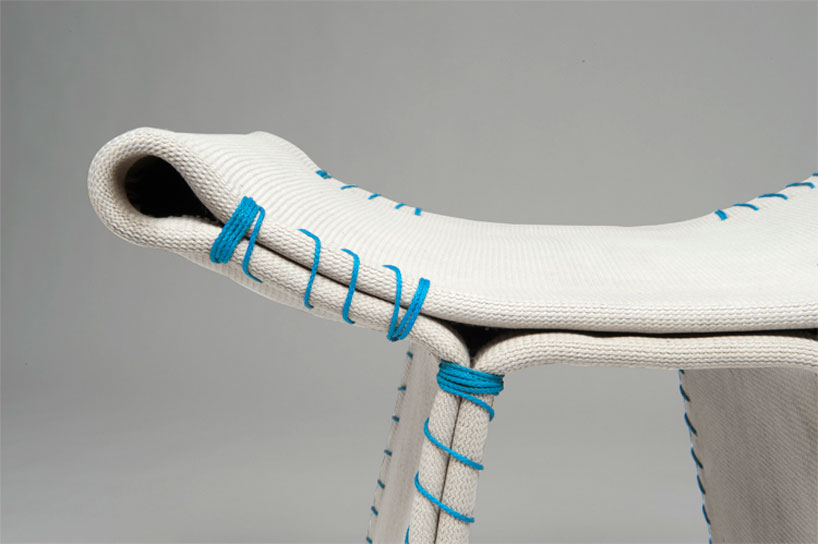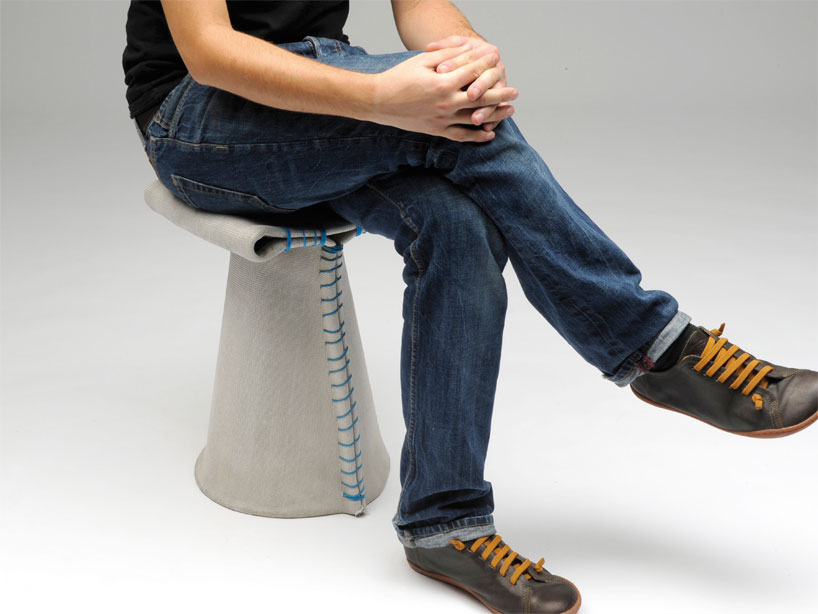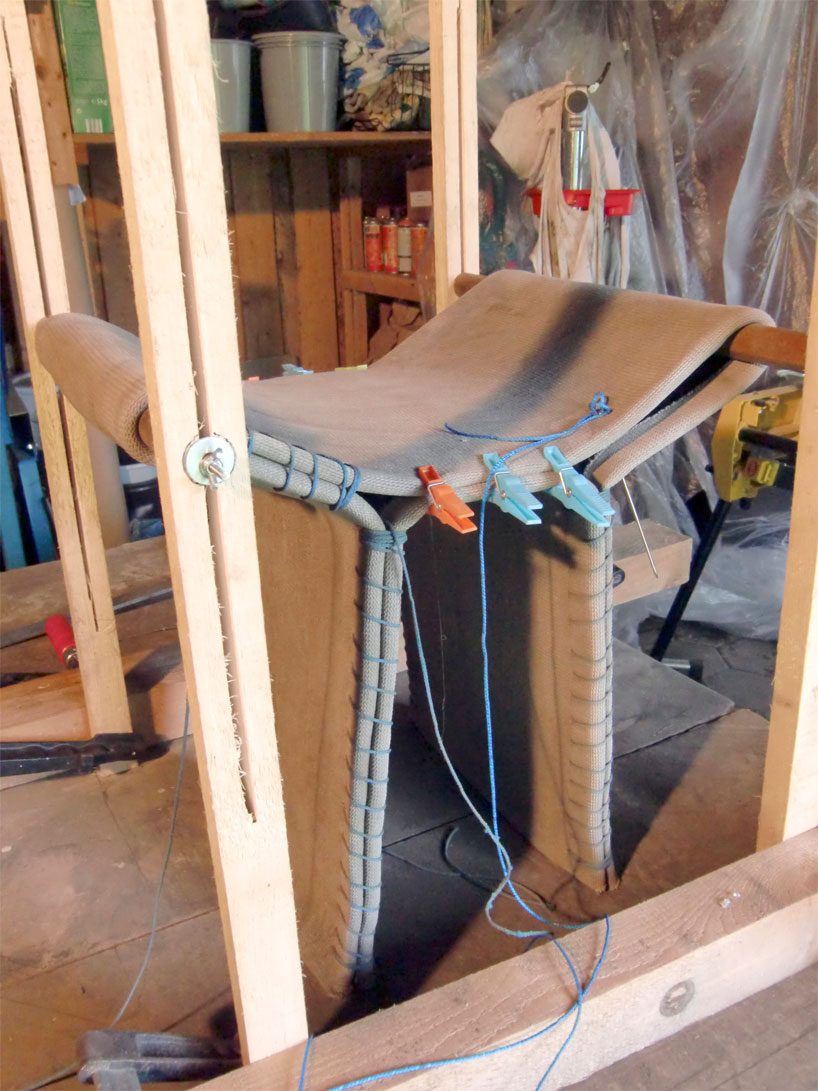[Concrete Canvas is formed, stitched and watered - and you get a concrete stool. Via]
Furniture and especially chairs have a great scale to test new (or old) material principles at a manageable size and weight and stripped down to essential production details that mean much if not everything to the concept and tectonics of the piece. I enjoy as well how the stool has a recognizable function, the socalled affordance, that make you immediately judge even images based on your own bodily experience.By now several concrete design pieces have made it to your Concretely blog - [just search 'chair' on this blog to check out a few]. German designer Florian Schmid's stool seem particularly tactile and the production principle is wonderfully easy to grasp.
Below project is via this post on Designboom.
"German designer Florian Schmid has developed 'stitching concrete', a project which has been influenced by the contrasts of the material Concrete Canvas.
Concrete cloth is a flexible cement impregnated fabric that hardens on hydration to form a thin, durable water proof and fire proof concrete layer. it combines the softness and warmth of fabric with the stability of cold, hard concrete.
[It looks like felt but it's concrete. Via]
[A rig supports the textile structure as it is formed, sewn, watered and finally cured to be a concrete textile stool. Image via]
To create each stool, Schmid has built a special wooden rack that is used as a mould in which he forms the concrete canvas around it.The device gives hold to the material during the watering and drying process in which the exposed seams are sewn together with either blue, red or yellow string providing extra stability and reinforcements. Once the stool is hardened, it can be removed from the mould, which always remains the same, but can be adjusted according to the different heights, lengths and widths of the objects."
I think I'll drape and sew myself a concrete summer cabin one of these days ;)
Concrete Canvas is introduced in my blog post 'Shake, drape and bake' here
Thanks, Diederik for sending the link



